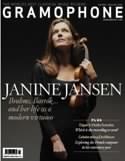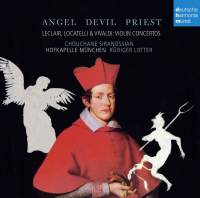Texte paru dans: / Appeared in: |
|
|
Outil de traduction (Très approximatif) |
|
|
Reviewer: Charlotte Gardner
The disc’s solos are split between French-Armenian violinist Chouchanne Siranossian and the orchestra’s director, Rüdiger Lotter, with Siranossian getting the gold in the form of those two concertos. Playing a Joseph and Antonio Gagliano violin, her period style is precise and musical, vibrato employed with restraint, and with a deft lightness of touch capable of working very different kinds of magic depending on the passage. Compare, for instance, the lilting, dance-like gentility she brings to the double-stopped solo opening of the triple-time second movement of Leclair’s G minor work with the gossamer attack with which she delivers the virtuoso bariolage of the Capriccio I of Locatelli’s D major Concerto. In the latter, a slight scratchiness creeps in as the passages rise fiendishly into the instrument’s upper harmonics (tr 16, 3'25"3'32"), but, given that Locatelli himself was described as ‘[bringing] forth great difficulties and [seeking] to astound the listener with his scratchy playing’, it doesn’t feel out of keeping. Meanwhile Lotter, on a copy of a 1741 Guarneri del Gesù made by Stefan Peter Greiner in 1996, is equally enjoyable with his ultra-clean sound, and then achieves an eminently satisfying symbiosis with Siranossian in Vivaldi’s double concerto.
The orchestra itself partners the
soloists sympathetically, even while the ensemble attack isn’t always as defined
as it could be during fast passagework, for instance in Il pianto d’Arianna (tr
7, 1'03"). Then, the disc’s engineering works both for and against it; recorded
at the Bavarian Radio studios, the continuo players are positioned close behind
the soloists at the front of the sound picture to create substantial textural
colour, but the wider miking of the strings occasionally feels slightly distant
by comparison. |
|
|
|
|
|
Cliquez l'un ou l'autre
bouton pour découvrir bien d'autres critiques de CD |
|




